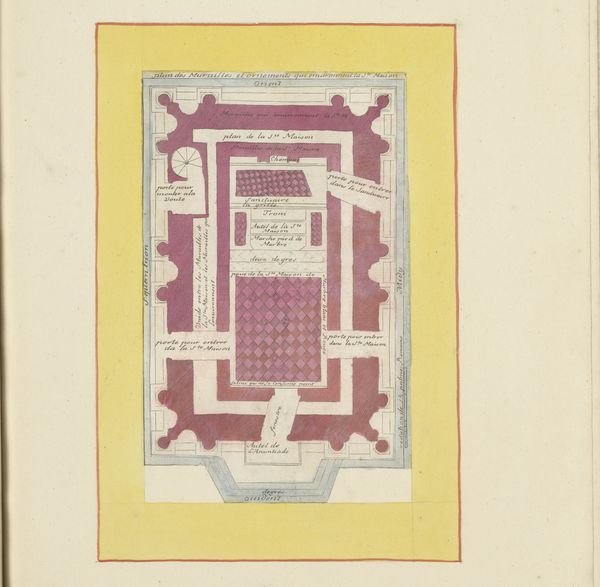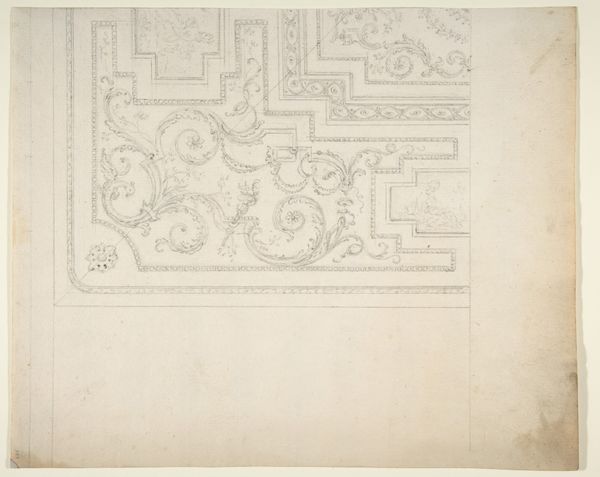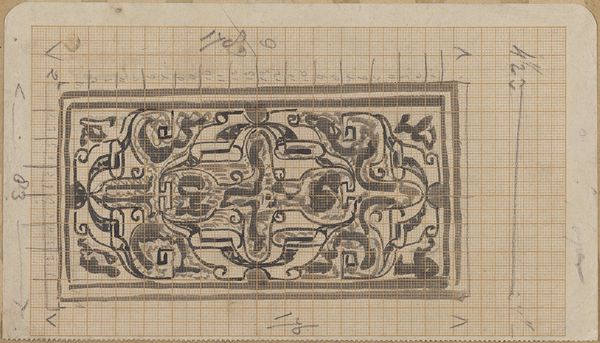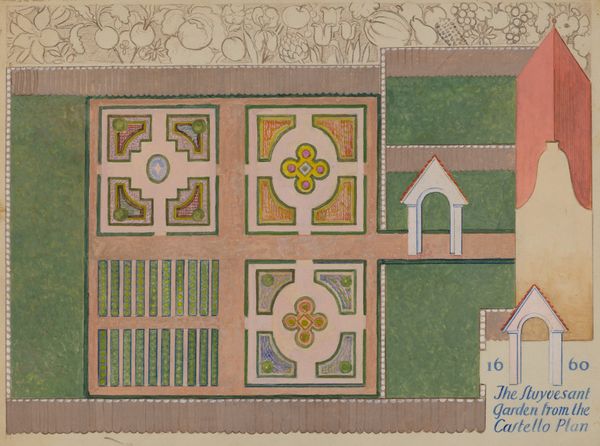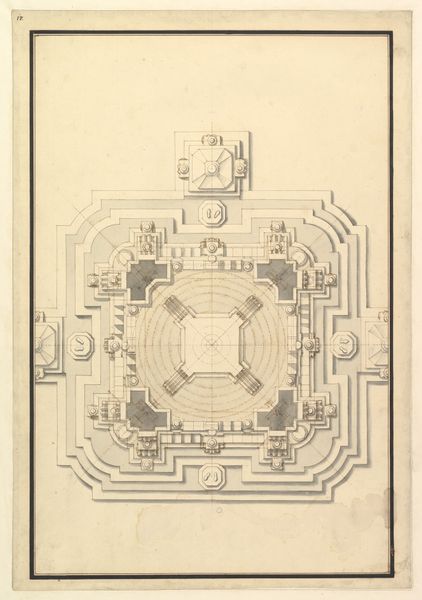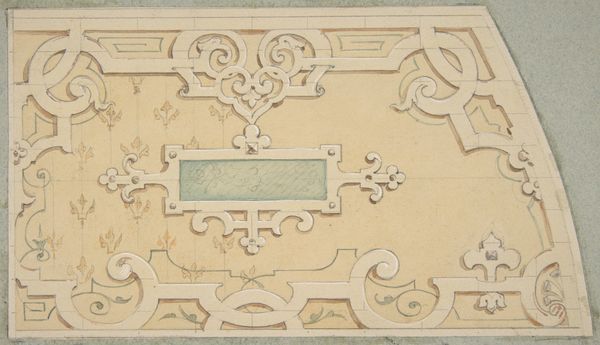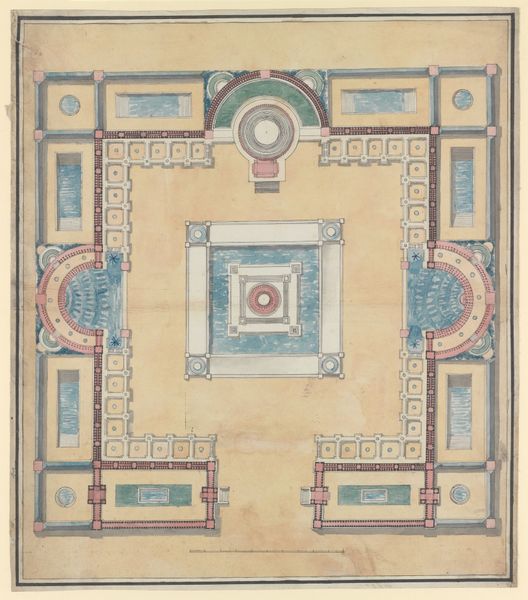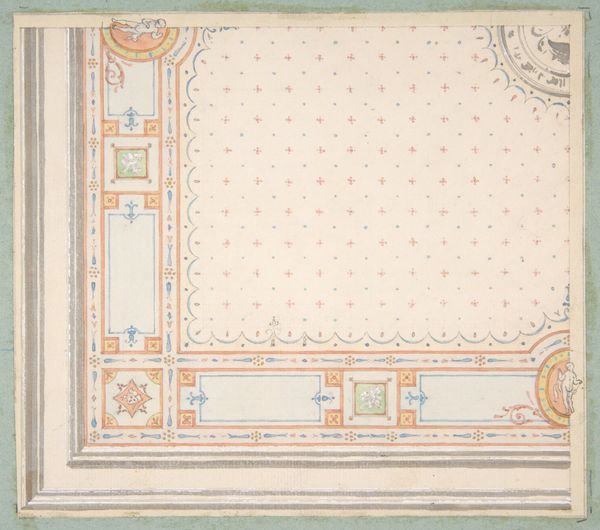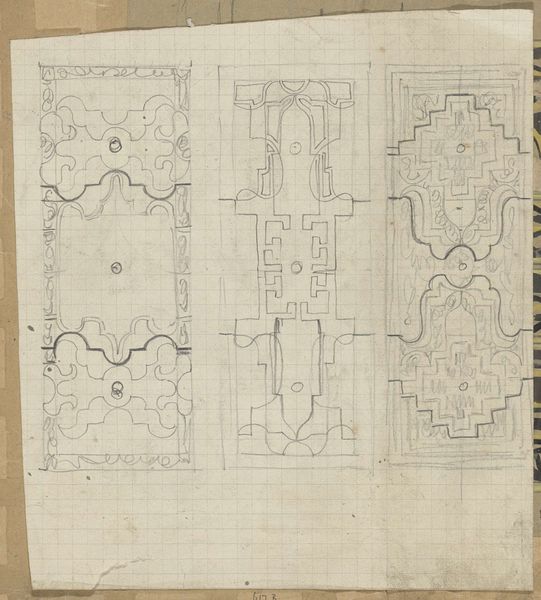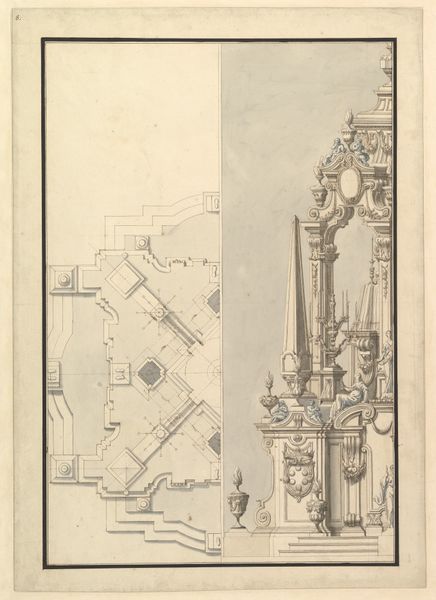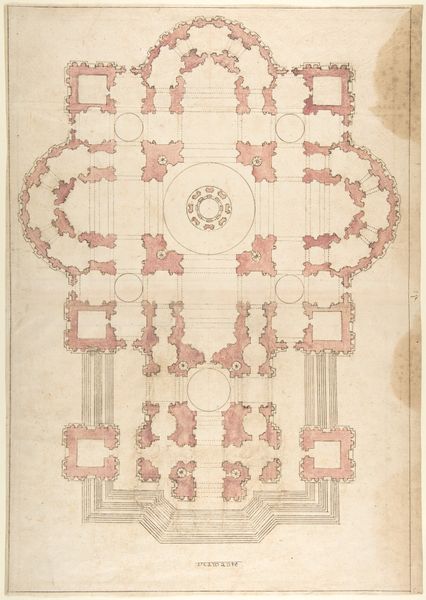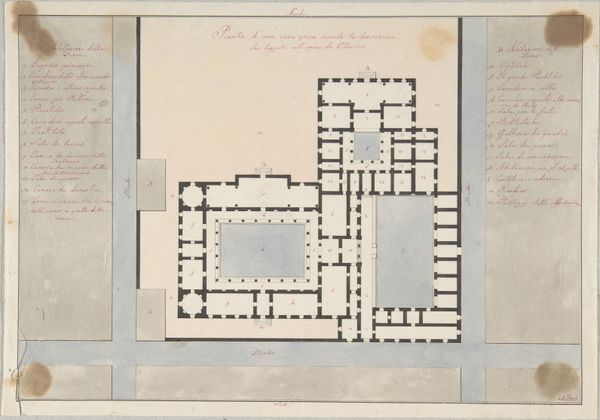
Partial design for ceiling decorated in chinese motifs 1830 - 1897
0:00
0:00
drawing, print, paper, watercolor
#
drawing
# print
#
asian-art
#
paper
#
historic architecture
#
traditional architecture
#
watercolor
#
geometric
#
line
#
decorative-art
Dimensions: Overall: 9 7/8 x 8 in. (25.1 x 20.3 cm) image: 5 1/2 x 3 13/16 in. (13.9 x 9.7 cm)
Copyright: Public Domain
Editor: Here we have Jules-Edmond-Charles Lachaise’s "Partial design for ceiling decorated in Chinese motifs," likely created sometime between 1830 and 1897. It's a drawing and print made with watercolor on paper. I’m really intrigued by how the European artist interpreted what he considered 'Chinese' design. What resonates with you when you look at it? Curator: I'm immediately drawn to how the artist merges European aesthetics with perceived Chinese motifs. The geometric framework suggests order, a very Western artistic value. But then the floral patterns attempt to emulate Eastern designs. It is almost as if the artist uses pattern to define the unknown and make it familiar. Don't you think the geometric nature flattens what may be seen as more chaotic "Eastern" visual systems? Editor: Yes, that tension is striking. The imposed grid attempts to categorize, but the asymmetrical placement of the floral details feels like a resistance to that rigid order. It also speaks to the Western gaze, perhaps unintentionally highlighting a superficial understanding of the original culture. What could be said of this superficial understanding based on that single flower and the "oriental" grid that supports it? Curator: Indeed, and look at how these supposed Chinese decorations were chosen for a ceiling—a space that historically symbolizes the heavens, knowledge, and enlightenment. To adorn it with a Western fantasy of the ‘Orient’ says much about cultural projection and the exoticism prevalent during that era. Does the application of it to a ceiling change your idea of its intention? Editor: That context definitely shifts my perspective. It becomes a symbol of Western appropriation, a desire to control and define other cultures. The cultural memory that is produced is one defined through a biased lens. Curator: Exactly. These decorative patterns hold layered meanings, beyond their aesthetic appeal, reminding us to be mindful of the historical context and power dynamics embedded within seemingly harmless designs. Editor: It’s fascinating how a seemingly simple decorative piece reveals such complexity. Thank you for unveiling that hidden history and those dynamics within. Curator: My pleasure! Visual symbols are such rich testaments of our past. They provide us with continuous opportunities to discover things about our culture.
Comments
No comments
Be the first to comment and join the conversation on the ultimate creative platform.
